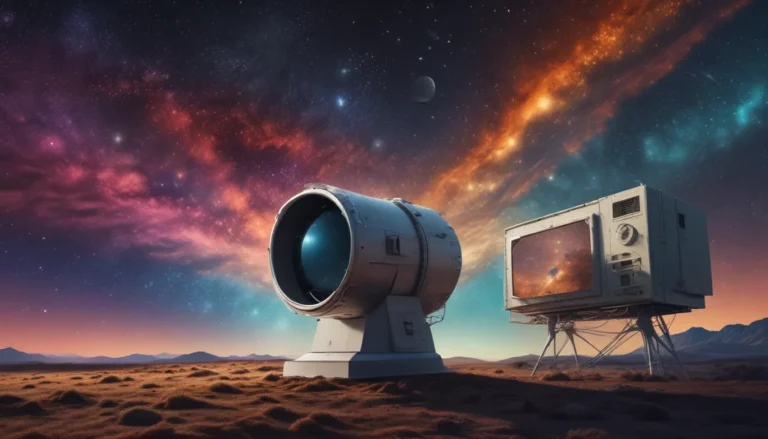The pictures we use in our articles might not show exactly what the words say. We choose these pictures to make you interested in reading more. The pictures work together with the words but don’t take their place. The words still tell you the important facts.
Space probes have been the unsung heroes of space exploration, delving into the depths of the universe to uncover its well-guarded secrets. These remarkable machines have defied expectations and shattered boundaries, providing us with invaluable insights into distant planets, moons, and celestial bodies. While we may be familiar with some of their remarkable accomplishments, there are also surprising and fascinating facts about space probes that continue to inspire awe and wonder. In this article, we will delve into 9 extraordinary and unexpected facts about space probes, shedding light on their incredible journeys and the groundbreaking discoveries they have made along the way.
Unraveling the Mysteries of the Cosmos:
- Space probes like Voyager 1 and Juno are uncovering secrets about distant planets and moons, expanding our understanding of the universe and sparking our curiosity about what lies beyond Earth. - From capturing stunning images of Pluto to searching for signs of water on Mars, space probes have revolutionized our knowledge of the cosmos, inspiring us to continue exploring the mysteries of space.
Voyager 1: A Trailblazer in Interstellar Space
The Voyager 1 probe, launched by NASA in 1977, holds the record for being the farthest man-made object from Earth. As of 2020, it has traveled over 13 billion miles and has entered interstellar space. This incredible achievement has allowed scientists to gather valuable data about the outer regions of our solar system, providing us with a glimpse into the vastness of space beyond our wildest imaginations.
Decoding the Universe with Hubble Space Telescope
The Hubble Space Telescope, launched into orbit by the space shuttle Discovery in 1990, has mesmerized us with its breathtaking images of distant galaxies. Over the years, it has been serviced and repaired by space shuttle missions, enhancing its capabilities and allowing it to capture even more stunning views of the universe. The Hubble Space Telescope continues to be a beacon of scientific discovery, unraveling the mysteries of the cosmos one image at a time.
Juno Probe: Unraveling Jupiter’s Secrets
Launched in 2011, the Juno probe is on a mission to study Jupiter's magnetic field and unlock the secrets of the largest planet in our solar system. By gathering data on Jupiter's auroras, atmosphere, and internal structure, scientists hope to better understand the formation and evolution of giant gas planets. The Juno probe's exploration of Jupiter promises to shed light on the enigmatic mysteries of this majestic planet.
Space Rovers: Pioneers of Martian Exploration
The Mars rovers, including Sojourner, Spirit, Opportunity, and Curiosity, have revolutionized our understanding of the Red Planet. These robotic explorers have provided unprecedented insights into the geology, climate, and potential habitability of Mars, unveiling evidence of past water and paving the way for future human missions to the planet. The Mars rovers stand as testaments to human ingenuity and our relentless pursuit of knowledge in the vast expanse of space.
New Horizons: Unveiling the Charms of Pluto
Launched in 2006, the New Horizons probe completed a historic flyby of Pluto in 2015, capturing the first close-up images of this distant dwarf planet. The detailed photographs revealed a complex and diverse surface, challenging our preconceived notions about Pluto's composition and inspiring a new wave of exploration into the outer reaches of the solar system. The New Horizons probe continues to redefine our understanding of the celestial bodies that inhabit our cosmic neighborhood.
Cassini: Chronicles of Saturn and Its Moons
The Cassini spacecraft, a collaborative mission between NASA, the European Space Agency, and the Italian Space Agency, orbited Saturn for over 13 years, uncovering the mysteries of the ringed planet and its enchanting moons. Through captivating images of Saturn's rings, the discovery of new moons, and significant contributions to our understanding of the planet's atmosphere, the Cassini spacecraft has enriched our knowledge of this celestial jewel in our solar system.
Galileo Probe: A Glimpse into Europa’s Ocean
During its journey to Jupiter, the Galileo probe detected magnetic field anomalies that hint at the presence of a subsurface ocean on Europa, one of Jupiter's largest moons. This groundbreaking discovery has sparked speculation about the potential for life in our solar system beyond Earth, opening new frontiers in the search for extraterrestrial life and the mysteries of the cosmos.
Rosetta: A Soft Landing on a Comet
In 2014, the Rosetta probe successfully deployed the Philae lander onto Comet 67P/Churyumov-Gerasimenko, marking the first-ever soft landing on a comet. This historic achievement provided crucial data about the composition and structure of comets, offering profound insights into the origins of our solar system and the celestial bodies that populate it. The Rosetta probe's mission exemplifies the boundless spirit of exploration that drives humanity to reach for the stars.
Mars Reconnaissance Orbiter: Seeking Water on the Red Planet
Equipped with advanced instruments, the Mars Reconnaissance Orbiter has been scouring the Martian surface for signs of water, both past and present. Its high-resolution images have revealed intriguing features like gullies and recurring slope lineae, fueling hopes for the existence of liquid water on Mars and laying the foundation for future discoveries that may one day unlock the secrets of life beyond Earth.
Into the Boundless Cosmos:
In conclusion, space probes stand as sentinel guardians of our quest for knowledge in the vast expanse of the cosmos. From the distant reaches of interstellar space to the enigmatic depths of Jupiter's moons, these extraordinary machines have transformed our understanding of the universe and continue to inspire us with their remarkable achievements. As we gaze towards the stars and ponder the mysteries of the cosmos, let us remember the unsung heroes of space exploration—space probes—that continue to push the boundaries of human knowledge and propel us towards a future filled with wonder and discovery. Through the lens of space probes, we glimpse the wonders of the universe and embark on a journey of exploration that knows no bounds.
FAQs
Q: How do space probes work?
A: Space probes are equipped with advanced scientific instruments and propulsion systems, launched into space on powerful rockets. They gather data by capturing images, conducting experiments, and collecting samples, transmitting the information back to Earth.
Q: What is the purpose of space probes?
A: The primary purpose of space probes is to explore and study celestial bodies beyond Earth, providing valuable information about distant planets, moons, asteroids, and comets.
Q: How far have space probes traveled?
A: Some space probes, like Voyager 1 and Voyager 2, are currently traveling through interstellar space, far beyond our solar system. Voyager 1 holds the record for being the farthest human-made object, over 14 billion miles away from Earth.
Q: Can space probes be controlled from Earth?
A: Yes, space probes can be controlled from Earth, with commands sent to the probes and data received using sophisticated communication systems, despite significant time delays due to the vast distances involved.
Q: Have space probes discovered signs of life in the universe?
A: Though space probes have not found direct evidence of extraterrestrial life, they have provided insights into the potential habitability of other planets and moons. For example, the Mars rovers have unearthed evidence of past water on Mars, a vital component for life as we know it.
Space probes have revolutionized our understanding of the universe, but they're just one piece of the cosmic puzzle. Nanosatellites, the Kuiper Belt, and space communication systems all play crucial roles in expanding our knowledge of the cosmos, pushing the boundaries of exploration, and connecting us with the wonders of space. Each discovery, each mission, brings us closer to the stars, guiding us on a journey of discovery and enlightenment that knows no bounds. Let us continue to marvel at the marvels of space exploration and embrace the endless possibilities that await us in the boundless expanse of the cosmos.






